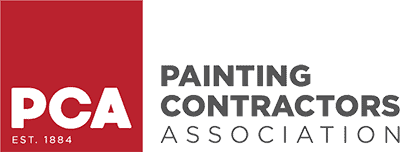Mold on stucco might seem like a minor issue, but if left unchecked, it can severely damage the integrity and appearance of your home. While it may be easy to overlook, it can have far-reaching effects on both your home’s curb appeal and its structural health.
Stucco is a porous material, making it an ideal breeding ground for mold, particularly in damp or humid climates. Mold growth can weaken the surface, cause discoloration, and even lead to long-term damage.
This blog provides a step-by-step guide on safe mold removal from stucco exteriors before repainting. By understanding the causes and risks of mold, as well as how to deal with it effectively, you can ensure that your home’s exterior remains not just beautiful, but structurally sound.
Understanding Mold on Stucco: Causes, Risks, and Challenges
What Causes Mold Growth on Stucco Exteriors?
Mold thrives in environments where moisture is present, and stucco, unfortunately, can easily provide such an environment. Here are some of the key causes:
-
Moisture retention: Poor drainage or leaks allow moisture to linger on the stucco.
-
Shaded areas: North-facing walls or areas shaded by trees can trap moisture, creating the perfect conditions for mold to develop.
-
Humid climates: High humidity levels contribute to condensation on stucco, encouraging mold growth.
-
Inadequate sealing or waterproofing: Stucco that isn’t properly sealed can absorb water, fostering an ideal environment for mold.
Why Stucco Is Susceptible to Mold
Stucco’s porous texture means it readily absorbs water. The rough surface of stucco provides ample space for mold to take hold and thrive, which makes it particularly susceptible to mold growth.
Potential Risks of Untreated Mold on Stucco
Ignoring mold can lead to several issues:
-
Damage to the stucco: Prolonged moisture exposure can cause the stucco to crack, crumble, or suffer from water infiltration.
-
Health issues: Mold spores can trigger respiratory problems and allergic reactions in susceptible individuals.
-
Aesthetic concerns: Mold stains and discoloration can drastically detract from your home’s appearance.
-
Repainting complications: Painting over mold without proper cleaning can lead to peeling, bubbling, and premature paint failure.
Common Mistakes During Mold Removal
While it’s tempting to tackle mold removal on your own, there are several mistakes homeowners often make. Here are some key pitfalls to avoid:
Using Harsh Chemicals or Bleach
Many homeowners turn to bleach for mold removal, but while bleach can kill the surface mold, it doesn’t address the root cause of the moisture problem. Additionally, bleach can damage the stucco surface, leading to discoloration and weakened structure. It also leaves residue that can prevent paint from adhering properly, leading to peeling or bubbling.
Scrubbing Too Aggressively
It’s important to be gentle when scrubbing stucco. Aggressive scrubbing can damage the surface and break down its protective layer. This damage can make it easier for mold to regrow, defeating the purpose of cleaning it in the first place.
Over-Saturating the Surface with Water
Stucco is highly porous, and excessive water can cause more harm than good. Over-saturating the surface with water may lead to deeper penetration of moisture, which can result in further mold growth and structural damage.
Not Addressing the Root Cause of Moisture
One of the biggest mistakes is simply cleaning the surface without fixing the underlying moisture issue. If you don’t address leaks, poor drainage, or inadequate waterproofing, mold will return.
Tools and Products You’ll Need for Safe Mold Removal on Stucco
For effective mold removal, it’s essential to have the right tools and products. Here’s a list of what you’ll need:
Essential Tools for the Job
-
Garden sprayer or pump sprayer: Helps apply cleaning solution evenly without over-saturating the surface.
-
Soft-bristle brush: Ideal for scrubbing mold without damaging stucco.
-
Pressure washer (low pressure): Useful for heavy mold buildup, but use a wide spray nozzle to avoid damaging the stucco.
-
Bucket, gloves, goggles, and mask: Protect yourself from mold spores and chemicals.
-
Drop cloths or plastic sheets: Protect plants and nearby surfaces from cleaning products and excess water.
Best Products for Cleaning Mold from Stucco
-
Oxygen bleach (e.g., OxiClean): A safer alternative to chlorine bleach that’s gentle on stucco.
-
Vinegar-based cleaners: Eco-friendly and effective for lighter mold infestations.
-
Specialty mold removers: Products like Wet & Forget or RMR-86 are designed specifically for stucco surfaces.
-
Borax solution: A mild yet powerful cleaner that can prevent mold from returning.
Why Avoid These Products
-
Straight bleach: Damages stucco, doesn’t prevent mold, and harms the environment.
-
Acidic cleaners: Can discolor and deteriorate stucco over time.
-
Ammonia-based products: Harmful fumes and ineffective on porous surfaces like stucco.
Step-by-Step Guide for Safe Mold Removal from Stucco Exteriors
Step 1: Inspect the Stucco and Assess the Mold Growth
Before you start cleaning, identify the type of mold you’re dealing with. Mildew is surface-level, while mold may penetrate deeper into the stucco. Also, check for visible cracks, water damage, or leaks in the stucco.
Step 2: Gather Your Materials and Protect Surroundings
Protect your plants and nearby surfaces with plastic sheets or drop cloths. Wear gloves, goggles, and a mask to safeguard yourself from mold spores. Ensure the weather is dry and mild—avoid cleaning on rainy or excessively humid days.
Step 3: Apply the Cleaner
Use a garden sprayer to apply your chosen cleaner. Start at the bottom of the stucco wall and work upwards to prevent streaking. Allow the cleaner to sit for at least 10-15 minutes or follow product instructions.
Step 4: Gently Scrub the Mold Away
Using a soft-bristle brush, gently scrub the mold with the grain of the stucco. Work in small sections to prevent over-saturation and be patient—forcing the cleaner into crevices can damage the surface.
Step 5: Rinse and Rinse Again
Thoroughly rinse the stucco with a low-pressure setting on your garden hose or pressure washer. Ensure all cleaner residue is removed to avoid staining or problems with paint adhesion.
Step 6: Let the Stucco Dry Completely
Allow the stucco to dry for 24-48 hours before moving on to repainting. You can use a moisture meter to verify that the surface is completely dry.
Step 7: Apply Mold-Resistant Sealant (Optional but Recommended)
After the stucco has dried, consider applying a mold-resistant primer or sealant to protect against future mold growth. Choose a product designed specifically for stucco to ensure compatibility.
How to Properly Prep Stucco for Repainting After Mold Removal
Why Proper Prep is Crucial
Mold removal is only the first step. If you don’t properly prep the stucco, you risk poor paint adhesion, which can lead to peeling, bubbling, or even mold regrowth.
The Right Primer and Paint
Opt for a mildew-resistant primer and breathable paint designed for stucco. This will help prevent moisture from being trapped underneath the paint.
Repairing Any Damage
If you notice cracks or holes in the stucco, repair them before applying primer. Use a stucco repair compound to fill gaps and smooth out the surface.
Sealing the Surface
A good sealant will reduce moisture penetration, further preventing mold regrowth.
When to Consider Calling a Professional for Mold Removal
If mold is covering more than 10 square feet or keeps returning despite your best efforts, it may be time to call in a professional. If there’s significant structural damage to the stucco or the mold is hidden, a professional will have the expertise to assess the situation.
Professionals use industrial-grade equipment to treat mold and offer guaranteed results. They’ll also assess and repair any underlying issues, such as leaks, that contribute to mold growth.
Consider calling a pro if you’ve noticed leaks, recurring mold, or significant damage to the stucco. They’ll help ensure that the job is done correctly and safely.
Preventing Mold Regrowth on Stucco After Repainting
- Address Moisture Issues: Ensure proper drainage around your home and install gutters and downspouts to direct water away from the walls. Also, make sure there’s enough ventilation in shaded areas to reduce moisture buildup.
- Reapply Protective Coatings: Consider a mildew-resistant paint or waterproofing sealer for added protection against mold.
- Routine Cleaning and Maintenance: Regularly inspect your stucco for any signs of mold or damage, especially around windows and the foundation.
FAQs About Mold Removal from Stucco Exteriors
Can I use bleach to remove mold from stucco?
No, bleach can damage the stucco and doesn’t prevent mold from returning.
How often should I clean my stucco exterior to prevent mold?
Clean annually, or after especially wet seasons, to keep mold at bay.
Can I pressure wash my stucco to remove mold?
Only if using low pressure to avoid damaging the stucco surface.
Protect Your Home’s Curb Appeal and Structural Integrity
Removing mold from stucco is essential for both appearance and health. By following safe, effective methods, you can restore your home’s beauty and prevent future mold problems. When in doubt, consult us for expert service.





